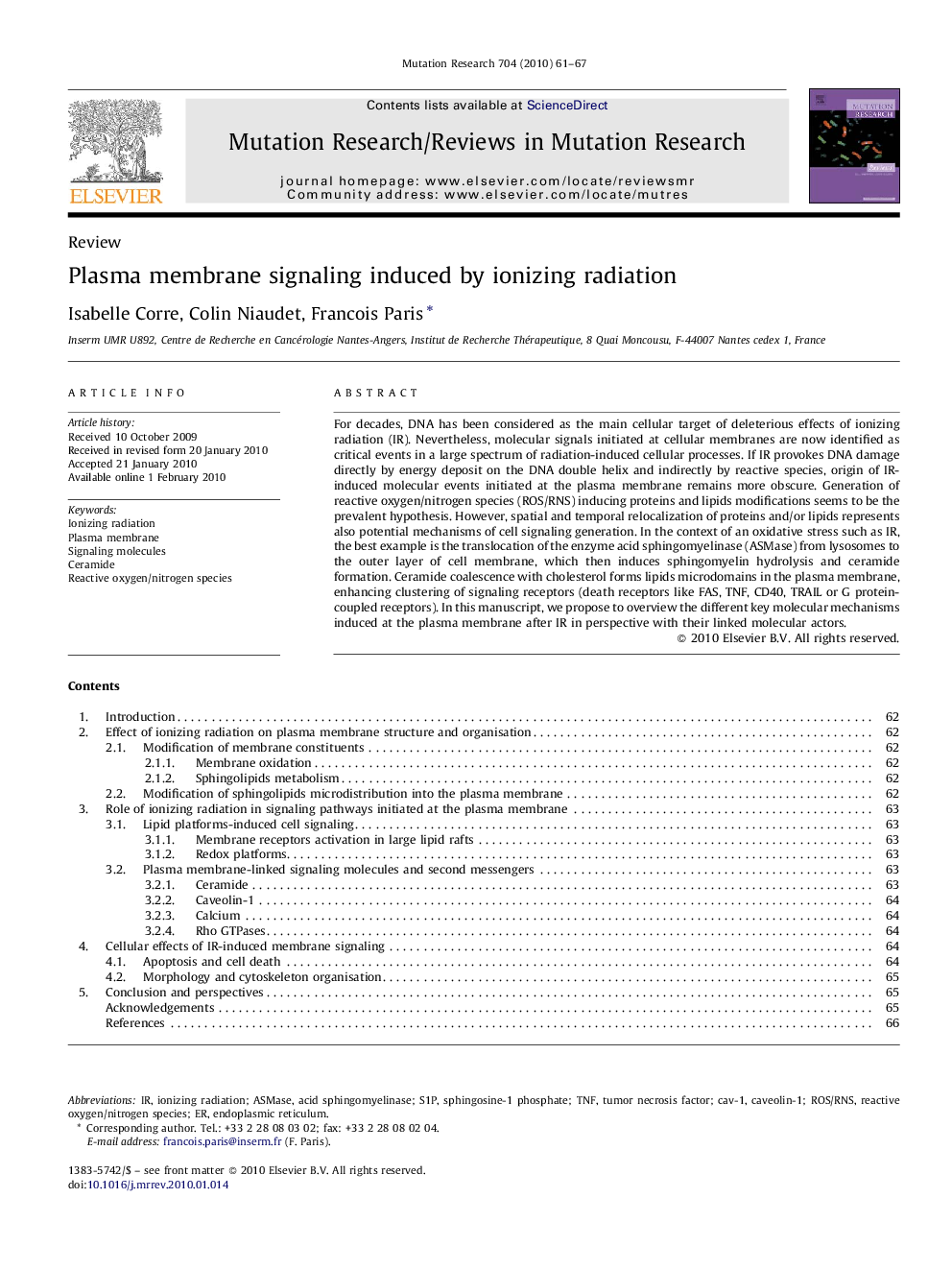| Article ID | Journal | Published Year | Pages | File Type |
|---|---|---|---|---|
| 2149662 | Mutation Research/Reviews in Mutation Research | 2010 | 7 Pages |
For decades, DNA has been considered as the main cellular target of deleterious effects of ionizing radiation (IR). Nevertheless, molecular signals initiated at cellular membranes are now identified as critical events in a large spectrum of radiation-induced cellular processes. If IR provokes DNA damage directly by energy deposit on the DNA double helix and indirectly by reactive species, origin of IR-induced molecular events initiated at the plasma membrane remains more obscure. Generation of reactive oxygen/nitrogen species (ROS/RNS) inducing proteins and lipids modifications seems to be the prevalent hypothesis. However, spatial and temporal relocalization of proteins and/or lipids represents also potential mechanisms of cell signaling generation. In the context of an oxidative stress such as IR, the best example is the translocation of the enzyme acid sphingomyelinase (ASMase) from lysosomes to the outer layer of cell membrane, which then induces sphingomyelin hydrolysis and ceramide formation. Ceramide coalescence with cholesterol forms lipids microdomains in the plasma membrane, enhancing clustering of signaling receptors (death receptors like FAS, TNF, CD40, TRAIL or G protein-coupled receptors). In this manuscript, we propose to overview the different key molecular mechanisms induced at the plasma membrane after IR in perspective with their linked molecular actors.
